The state of Ohio and the metro area of Indianapolis, Indiana, are the crossroads of American commerce. Literally.
When data sets from five years of corporate facility investment project activity tracked by Site Selection were blended with the latest data on infrastructure projects from the Bipartisan Infrastructure Law Dashboard maintained by the General Services Administration, Ohio, Indiana and Texas topped the charts among states. Analyzed by metro area, three thriving regions from those three states came out on top: Indianapolis-Carmel-Anderson, Indiana; Columbus, Ohio; and Dallas-Fort Worth-Arlington, Texas.

Photo courtesy of Ohio DOT

Terry Slaybaugh, Vice President, Sites and Infrastructure, JobsOhio
Site Selection’s other rankings are primarily driven by the private-sector side of things, as they should be in a publication focused on global corporate strategy. But that strategy inevitably involves infrastructure factors that range widely and affect operations deeply.
“This goes deeper,” observes Ryan Squire, director of communications at JobsOhio, noting that the state just announced over $1.5 billion in funding for specific site infrastructure over the next two years, on top of all the site work already going on across the state. Passed early this year, the state’s transportation budget, bolstered by federal dollars, came to $13.5 billion over the next two years. That total includes major projects like the Brent Spence Bridge over the Ohio River connecting Cincinnati and Northern Kentucky — the Cincinnati region ranked No. 5 among the Top 10 in this year’s Global Groundwork Index.
In late July, Ohio Governor Mike DeWine and Kentucky Governor Andy Beshear announced that Ohio-based Walsh Kokosing had been awarded the design-build contract for the entire $3.6 billion Brent Spence Bridge Corridor Project, calling it “one of the most significant infrastructure megaprojects in the nation.” The contract addresses six of the corridor’s eight total miles, including five miles of I-71/75 in Kentucky and one mile of I-75 in Ohio. It also includes improvements to the Brent Spence Bridge and the construction of a new companion bridge to its immediate west to reduce congestion, improve traffic flow and safety, and maintain key regional and national transportation corridors.
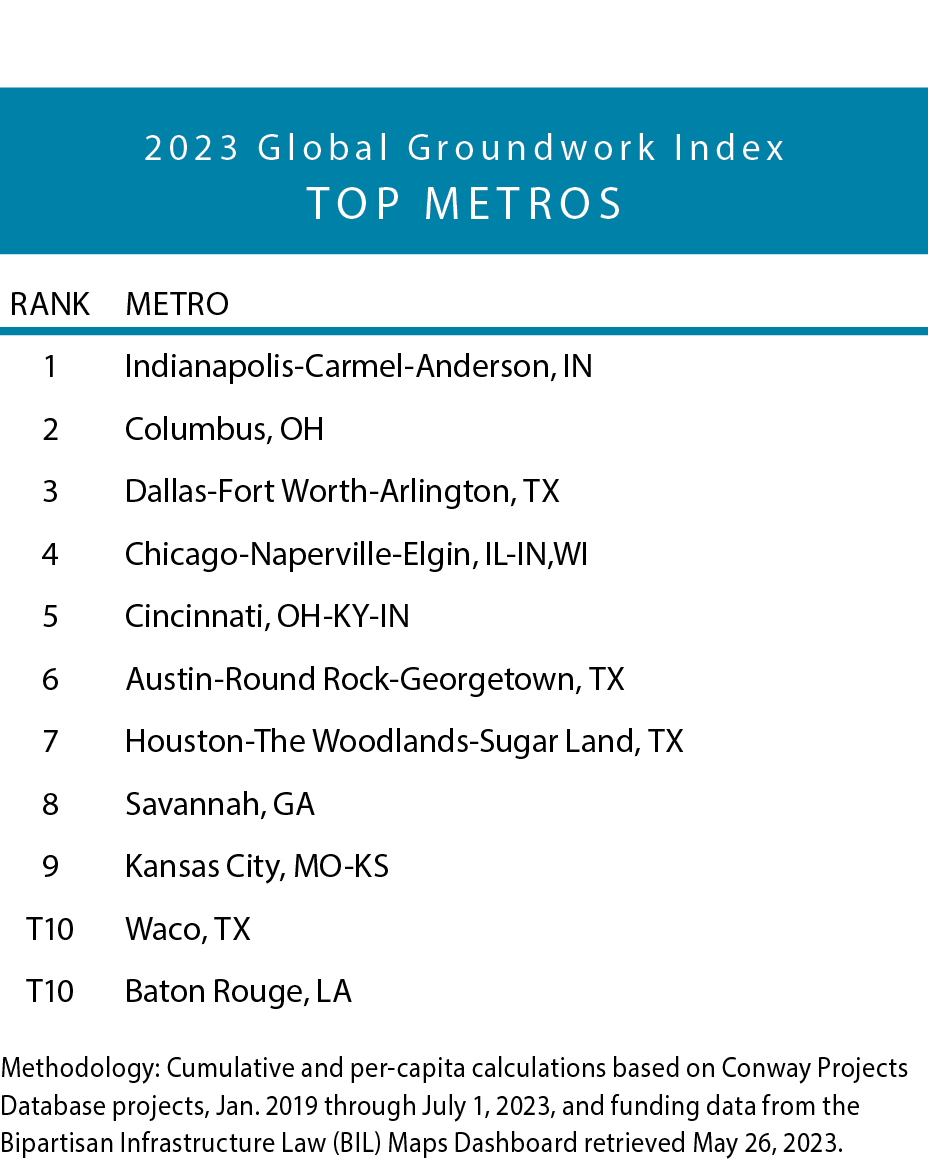
“Today shows what’s possible when folks from different political parties, different states, and different levels of government all work together to do what’s right for our people,” said Governor Beshear, whose state is No. 5 in this year’ Global Groundwork Index thanks in part to its Ohio River metros of Greater Cincinnati/Northern Kentucky and Greater Louisville. “With the help of this new design-build team, we are one step closer to building the companion bridge without tolls and providing the many families, communities and businesses that rely on this vital commercial link with new and exciting growth and development opportunities.”
In a similar fashion, 10 years and $1.1 billion worth of I-75 corridor revitalization from Lima to the state line with Michigan (No. 7 in this year’s Index) culminated in a dedication ceremony in early August at the Michael DiSalle bridge in Toledo. Meanwhile, state government continues to allocate funds to the state’s 53 transportation improvement districts, including $3.5 million toward 10 projects in 10 counties awarded in early August as well. “These investments will go a long way toward ensuring that our state can attract new companies to invest in Ohio and allow existing companies to continue providing quality jobs to Ohioans,” said Ohio Department of Transportation Director Jack Marchbanks.

Photo courtesy of Visit Indy
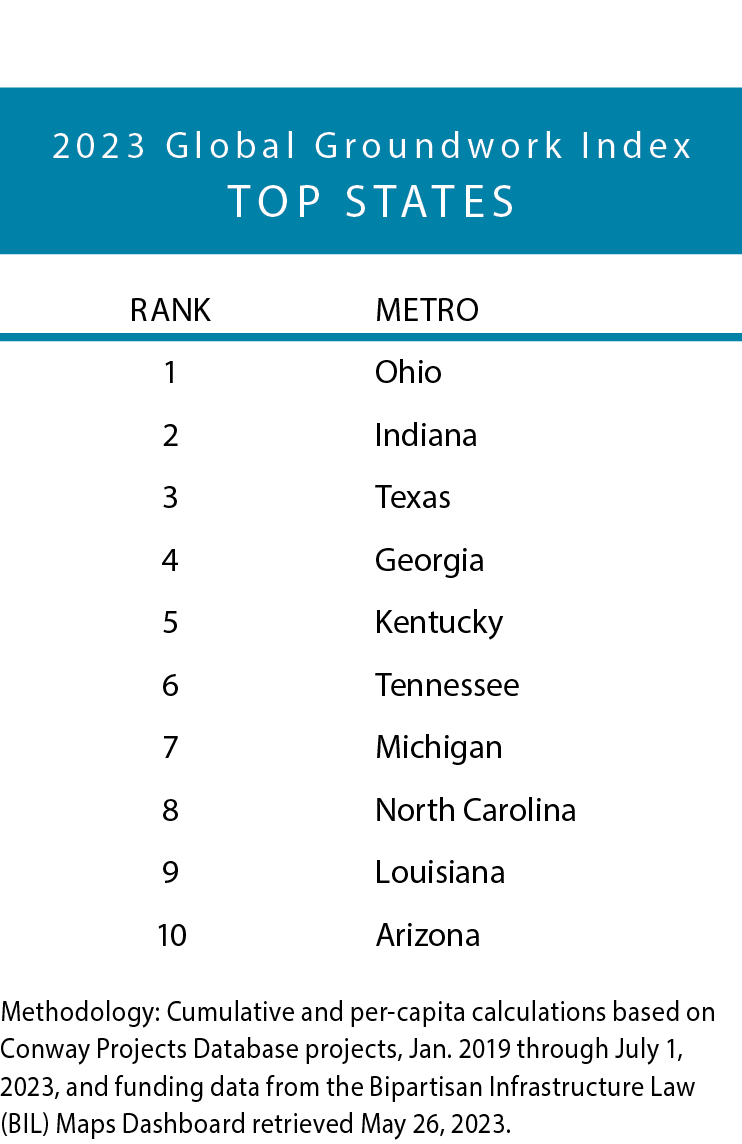 The case study, however, for the marriage of infrastructure investment with corporate investment is the huge Intel fab coming to Ohio, which will benefit from $90 million in state funds for road upgrades among other infrastructure components of the deal.
The case study, however, for the marriage of infrastructure investment with corporate investment is the huge Intel fab coming to Ohio, which will benefit from $90 million in state funds for road upgrades among other infrastructure components of the deal.
Terry Slaybaugh, vice president, sites and infrastructure with JobsOhio, is an airport development veteran who was named the 2022 Economic Development Professional of the Year by the Ohio Economic Development Association. He says JobsOhio’s commitment of $10 million a year since spring 2020 toward its air service restoration program has contributed another important infrastructure component. “We’ve now deployed $28 million and created 29 new routes in the state from five commercial service airports,” he says. “There are two new international routes — Aer Lingus from Cleveland to Dublin and British Airways from Cincinnati to Heathrow. Both started in May with a contract and revenue guarantee agreement for three years.” The moves have received a lot of positive feedback from employers, he says, citing GE’s substantial presence in Cincinnati and a number of companies such as Eaton in the Cleveland area that have strong ties to Ireland.
“As Columbus continues to develop, hopefully we will get another opportunity to attract international service to Columbus,” he says.
Slaybaugh also oversees the Site Ohio Authenticated Sites program.

Photo by Bruce Hull courtesy of ODOT
Broadband Bonanza
In June the U.S. Department of Commerce’s National Telecommunications and Information Administration (NTIA) announced how it had allocated funding to all 50 states, the District of Columbia, and five territories to deploy affordable, reliable high-speed Internet service to everyone in America as part of its “Internet for All” initiative. “Whether it’s connecting people to the digital economy, manufacturing fiber-optic cable in America, or creating good-paying jobs building internet infrastructure in the states, the investments we’re announcing will increase our competitiveness and spur economic growth across the country for years to come,” said Secretary of Commerce Gina Raimondo. Nineteen states received more than $1 billion. Here are the Top 10 by allocation amount:
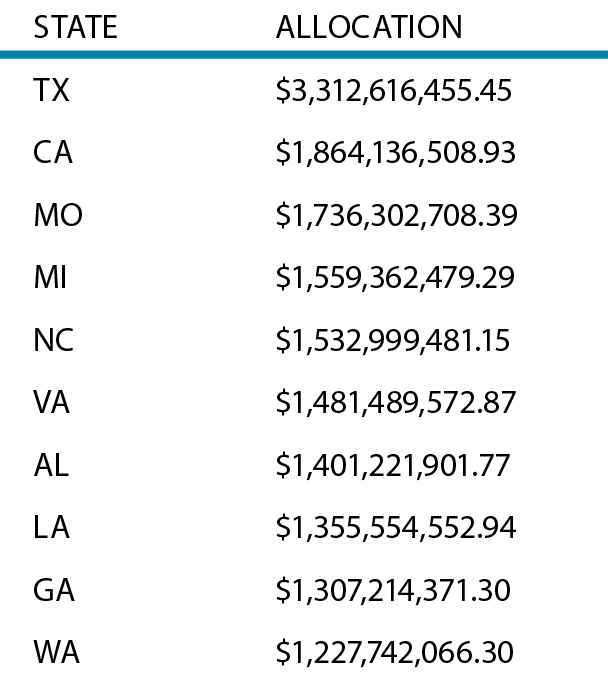

Ohio Department of Transportation Director Jack Marchbanks
“We just had our fifth wave of Authenticated Site candidates,” he tells me. “There were over 130 sites submitted to us from over 40 different partners across the state.”
Good thing too. JobsOhio handled more than 100 reactive site search inquiries in 2022 and there have already been nearly 140 during the first seven months of 2023. “Being able to have a portfolio of sites to use in those has really become infrastructure,” Slaybaugh says. “We recently had a European solar company approach us. They haven’t landed yet in Ohio. But I think its probably almost taken for granted now how quickly we can identify sites in the state that meet the company’s requirement.”
Since the Intel project attraction, he says, “we’ve had a number of communities come forward and ask, ‘How can I create a site that will win an Intel or a Honda EV battery plant?’ To be able to respond consistently, that’s where the value is with our program.”
Since the onshoring wave that began with the pandemic, Slaybaugh says, “the demand for water and sewer infrastructure is huge, having to identify a site where we can get 20 million gallons of water a day for a chip fab or 2 million to 5 million gallons per day for an EV battery plant.”

Photo courtesy of City of Carmel
“Governors are working together across party lines and state lines on common-sense solutions to safely speed up the process to deliver energy and infrastructure benefits nationwide, and we stand ready to support congressional efforts to do the same at the federal level.”
— National Governors Association, May 19, 2023, advocating for permitting reform to expedite infrastructure and energy projects
Megaproject prospects like Intel ratchet up the stakes. Water is the No. 1 topic, Slaybaugh reiterates, whether it’s a chip fab, battery manufacturing or solar production. He cites the months the state team spent trying to determine how to supply the up to 5 million gallons of water a day that would be required by the Honda EV battery project in Fayette County. “At the end of the day, for the first time in the state’s history, we ended up running a 21-mile water line in an ODOT right of way. It took the governor leaning in with the DOT and the local communities.
“State government balance sheets will benefit particularly from more than $200 billion in increased funding for transportation and water: $70 billion for roads, $40 billion for bridges, $39 billion for public transportation, $15 billion for electric vehicles, and $55 billion for water systems.”
— Pew Charitable Trust, “How Bipartisan Infrastructure Law Can Help State and Local Governments Meet Needs,” April 2023
“Obviously the Intel project was one where we had to react quickly,” he says, especially because the chosen area in Licking County was rural. “It used to be, ‘Could you assemble 800 or 400 acres?’ Now it’s 2,000 acres. On top of that, ‘Could you come up with 12 million gallons a day on day one, and a treatment system with the ability to treat that much water a day?’ Our ability to win the projects we’ve won in Ohio is because we’ve pretty quickly validated what the infrastructure [requirement] was.”
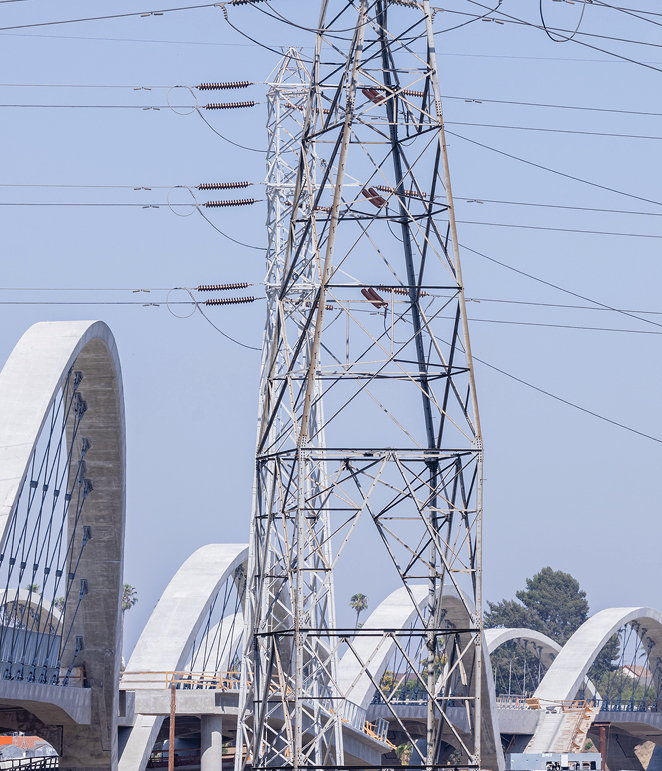
Photo courtesy Iwan Baan courtesy of v2com newswire
Global Groundwork Index, International Edition
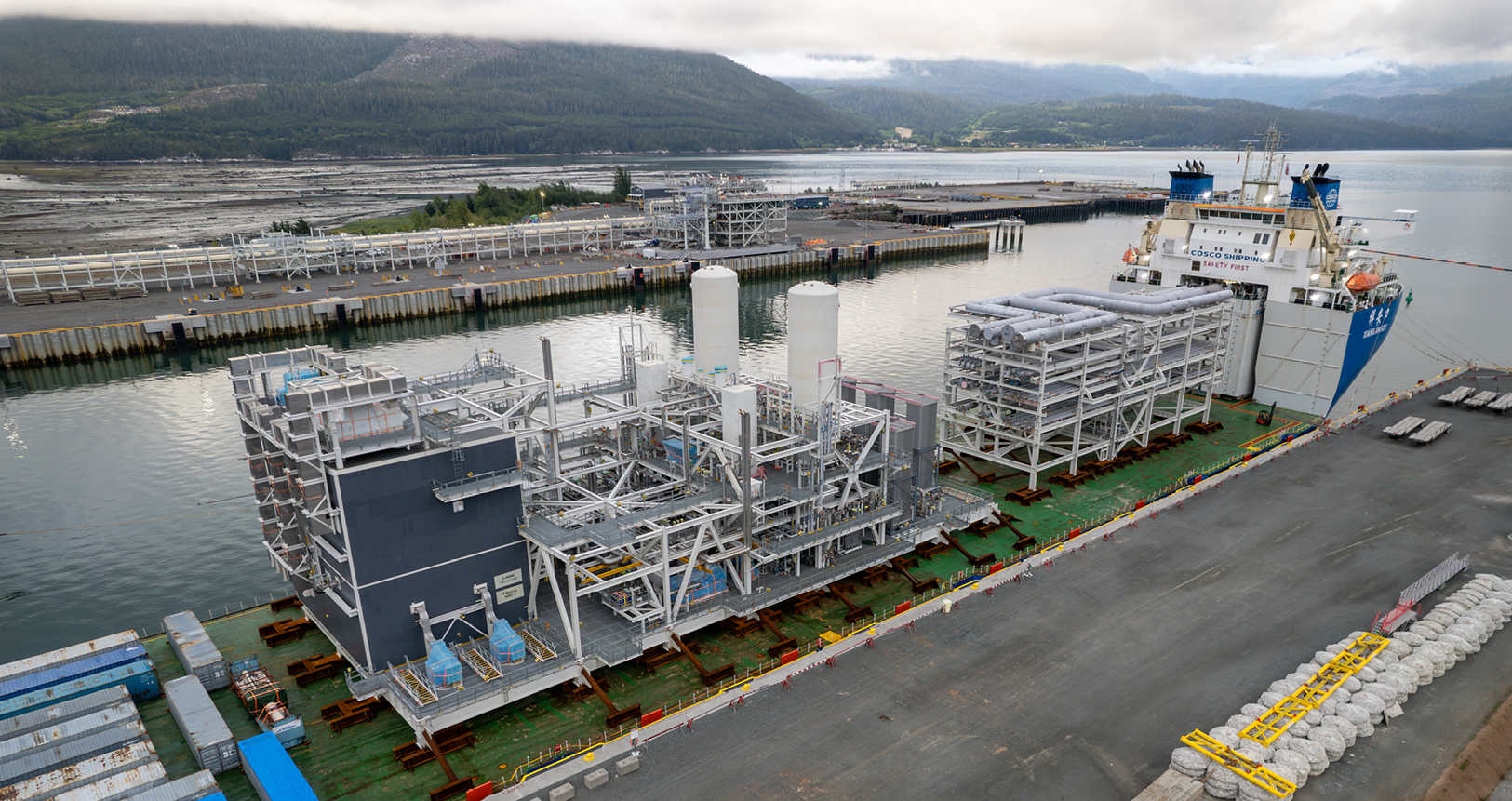
Photo courtesy of Fluor and Business Wire
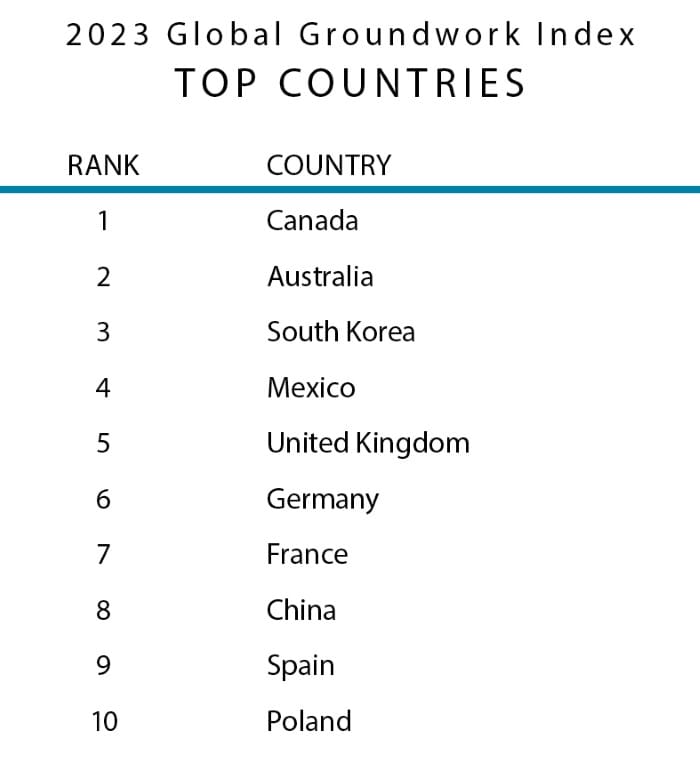 The United States is far and away the world leader when it comes to the combined infrastructure and corporate end-user facility investment and job creation data that comprise the Global Groundwork Index. How are the rest of the world’s countries doing?
The United States is far and away the world leader when it comes to the combined infrastructure and corporate end-user facility investment and job creation data that comprise the Global Groundwork Index. How are the rest of the world’s countries doing?
Not having a federal infrastructure investment scorecard for the entire globe, we instead combined Conway Projects Database data on corporate end-user projects abroad with infrastructure data and metrics from the Organization for Economic Cooperation and Development (OECD). The OECD is by definition a limited set of countries. But it’s one of the best when it comes to verifiable infrastructure data resources measured against national GDP.
Combining the two data sets results in the Top 10 countries listed to the right.
The OECD data considered alone point to China as the unsurprising world leader in infrastructure, followed by Azerbaijan, Australia and South Korea. As for the corporate facility side of the ledger, Canada, the UK and India top the project tallies. Mexico, Canada and China are the top three in corporate project capital investment. India, Mexico and Argentina top the project-affiliate job creation totals.
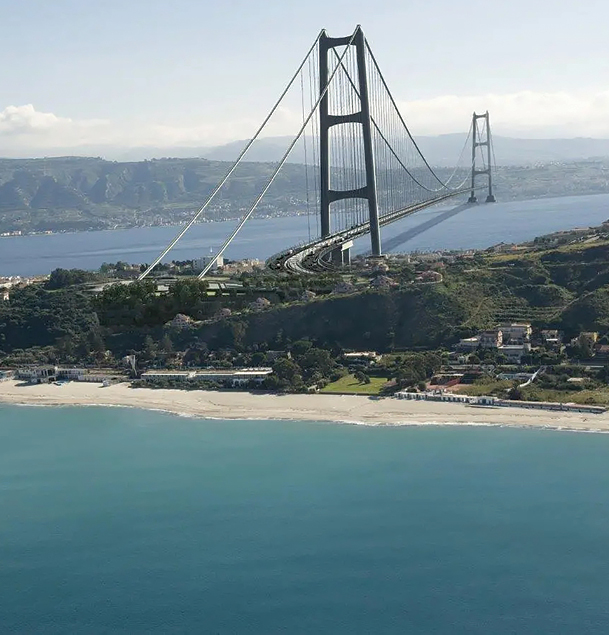
Rendering courtesy of Webuild Group
Where Canada surges ahead are its No. 1 rankings in corporate projects per capita and corporate project-affiliated investment per capita, beating out Singapore and the UK, respectively, in those categories. The land of the maple leaf comes in third in corporate facility project-affiliated job creation per capita, behind Argentina and Cambodia.
Put it all together, and you have solid Canadian groundwork for prosperity and economic development. Google the name of any Canadian province and the words “major project inventory” and you’ll see plenty of infrastructural evidence alongside the private-sector variety.
One example of the two coming together is in Kitimat, British Columbia, where Fluor earlier this year took delivery of the final module of the massive LNG Canada liquefaction terminal project, shipped to the port from Fluor’s fabrication yard in Zhuhai, China. LNG Canada is a joint venture among Shell, Petronas, PetroChina, Mitsubishi Corporation and Korea Gas Corporation. The project will have an initial capacity to produce 14 million tons of LNG per year. First shipment of LNG is scheduled for mid-decade.
“Liquefied natural gas is essential to the energy transition as it displaces higher carbon forms of energy,” said Jim Breuer, group president of Fluor’s Energy Solutions business. “We are proud to build Canada’s first large LNG export facility, which will support global energy security.”

